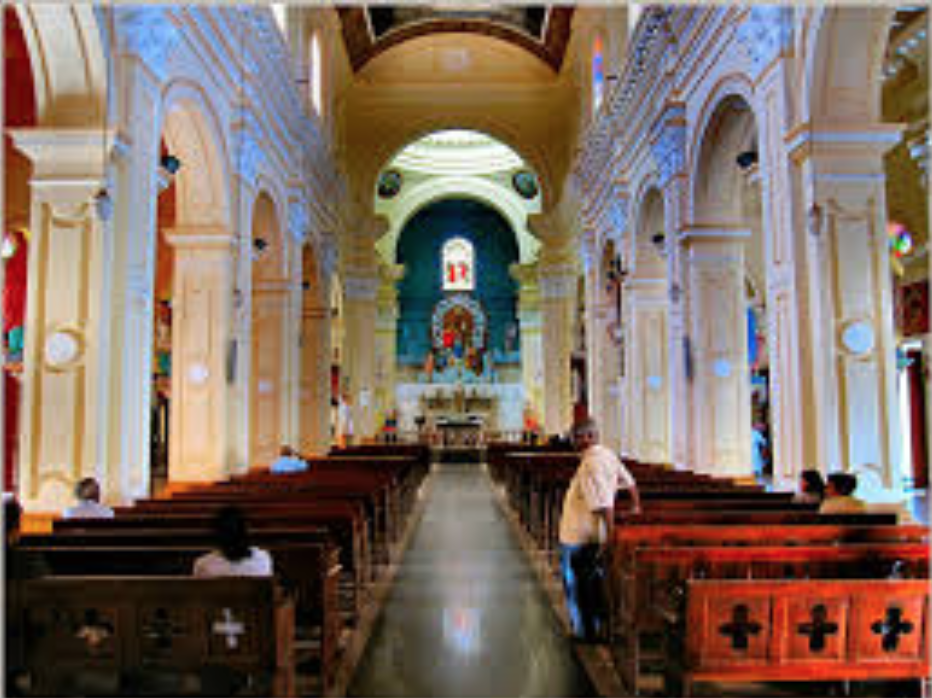29 April 2019
Country: Sri Lanka
 Over the past week, Sri Lanka has struggled to control the repercussions of the six coordinated attacks that shook the country last Sunday.
Over the past week, Sri Lanka has struggled to control the repercussions of the six coordinated attacks that shook the country last Sunday.

“One of the things that has happened is that the whole country is living in a state of fear, said Bashaña Abeywardane, Coordinator of Journalists for Democracy in Sri Lanka.
One week ago, nine suicide bombers attacked six different churches and high-end hotels, killing almost 300 and injuring hundreds more on Easter Sunday. As a manhunt to find those responsible ensues, many are afraid of a resurge in ethnic and religious-based violence, thought to have been left behind when the 25-year-long civil war ended ten years ago.
“There is a difference between the violence that we used to experience, and now,” Abeywardane continued. “Now we don’t know who, or where the enemy is.”
First, the government circulated rumors that the attacks were retribution for the attack on the Muslim community in Christchurch, New Zealand earlier this year. Shortly after that, the Islamic State claimed responsibility for the attack, despite there being no evidence of pre-planning that ordinarily accompanies their attacks. Now it seems that the responsible party was a local Muslim hardline group known as the National Towheed Jamath (NTJ), though the exact identities of the bombers are still unknown.
Unfortunately, one of the key factors adding to the confusion is the media. As a Singhala Buddhist-majority country, there is a commonly known religious bias in most of Sri Lankan media outlets, not to mention strict government controls. According to Abeywardane, this worsens during periods of political tension.
“The media magnifies phobias and fears about minority communities,” he says, mentioning that he has many Muslim friends who have been afraid to leave their homes over the past week, out of fear of religiously-motivated violence.
Muslims who have led their homes are frequently stopped, searched or treated as suspects. Most recently, the Sri Lankan government banned the burqa and niqab, full face veils worn by some conservative, Muslim women, for “security reasons.”
“There have been several incidents of Muslim people—particularly Muslim women facing discrimination,” Senel Wanniarchchi, co-founder of the civil society group “Hashtag Generation” elaborates.
In addition to hate speech, “fake news” has also been a major issue. While the Sri Lankan government was quick to shut down most social media websites after the attacks (a move that was praised by many western media outlets for preemptively stopping the spread of misinformation), Sri Lankans on the ground say that this has only added to the confusion.
“The government block of social media is seen as some kind of positive response to curb Zuckerberg’s empire, instead of what it actually is—an undemocratic knee-jerk reaction that helps spread fear, uncertainty and doubt, Yudhanjaya Wijeratne, a Colombo-based data and social media researcher told CNN.
Instead of using Sri Lanka’s tragedy to advance the idea that Facebook needs greater regulations to stop the spread of misinformation, Wijeratne asks western journalists to consider the positive aspects of social media in a country with strict government controls.
“In a country with such tight government controls on traditional media, social media is more of a boon than Western commentators would assume,” he later wrote in a Slate article, with an accompanying Twitter thread.
While social media is a common culprit of spreading disinformation, it can be extremely useful in the wake of an emergency. Facebook’s “check in” feature allows anyone in the vicinity of a terrorist attack or natural disaster to mark themselves as safe, alleviating panic among friends and family. If someone does have a missing loved one, they can piece together clues through social media, or use it as a communication tool to find them.
Ironically, Sri Lankan traditional media did not prove much better in stopping the rumor mill. At one point, several media outlets published the official death toll as 359—only to redact it back to 251. Most disturbingly, the first publish list of suspects published a picture of US citizen Amara Majeed next to the name “Abdul Cader Fathima Qadiya.” The 22 year old Brown University student woke up to a flurry of Facebook messages calling her a terrorist.
As the manhunt for the terrorists responsible intensifies, Abeywardane fears that the media will be used to stoke religious hatred.
“We need to decrease the feelings of insecurity, and make sure that people do not panic,” he says. “Our number one priority needs to be making sure that the media does not contribute to the spread of ethnic and religious violence.”
Nevertheless, it is not all messages of hate. In the wake of the tragedy, many Sri Lankans are taking the religious and political tensions as an opportunity to come together, and remind the world that their country is one of religious peace and tolerance.
“There is Islamophobia, but that is not the only narrative,” Wanniarchichi adds, pointing out that many Singhala Buddhists and Christians have guarded mosques while Muslims prayed, and religious leaders are encouraging forgiveness among their followings.
Over the weekend, Muslims around the world gathered to show solidarity with Sri Lanka’s Christian community, carrying signs with messages that condemned religious violence and called for unity.
“It is important to point out that people are coming together as well.”
